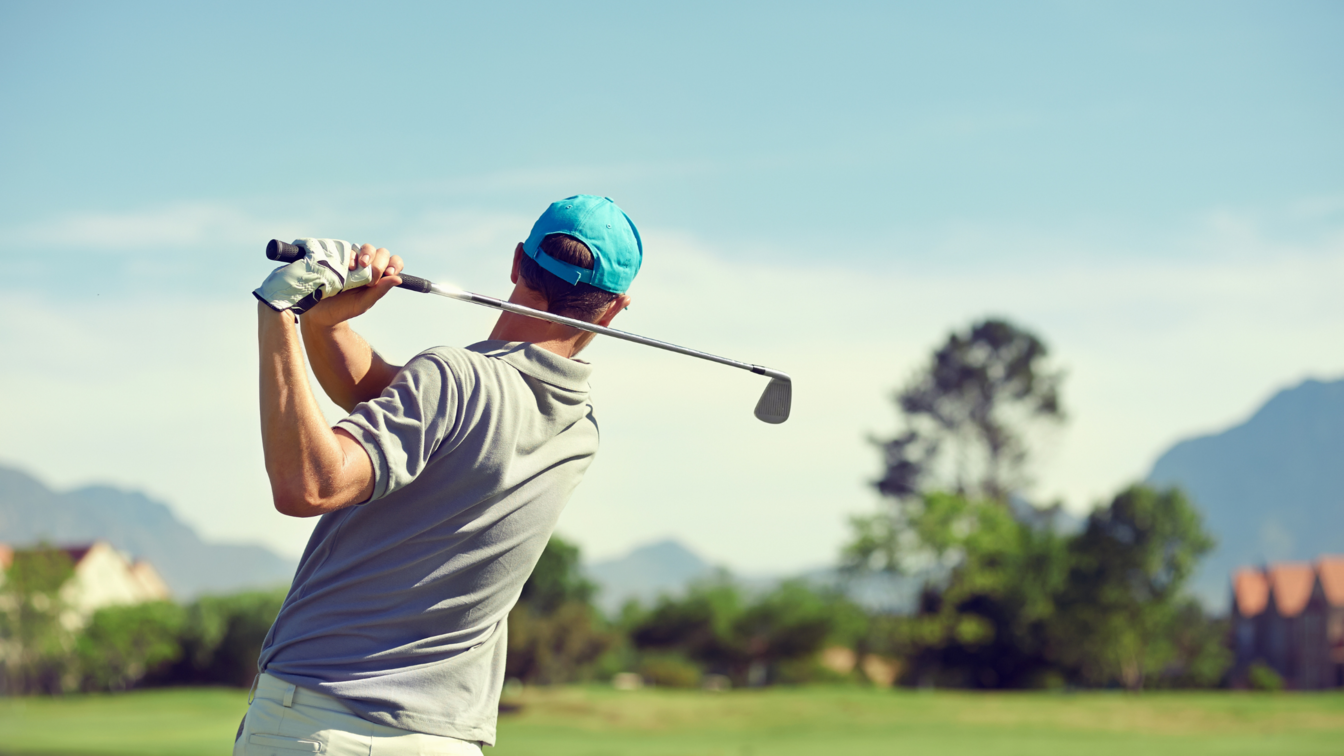
Golf Season and Body Pain
Golf season’s in full swing! Whether you’re a seasoned golfer, hit the golf course a couple of times a year, or someone who is a mini-golf enthusiast, the best way to get into golf season is by avoiding injury. If you have been struggling to achieve that perfect swing this year, we have some tips for you. The number one way people get injured is by overusing muscles and joints they haven’t used or exercised in a long time. Staying in shape and working out your shoulders is a great way to prevent injury, but if you haven’t been very active this past winter, we’re here to give you some tips to avoiding injury this golf season.
The three most common golf injuries are rotator cuff tendonitis, golfer’s elbow, and knee pain. Before you hit the golf course, make sure you’re doing everything you can to avoid injuring yourself and to ensure you don’t already have any of these underlying issues.
Golf and Rotator Cuff Tendonitis
What is the Rotator Cuff?
The rotator cuff group is an essential group of muscles and tendons that surround the shoulder joint. Rotator cuff tendonitis is an inflammation of the tendons and can lead to pain and decreased shoulder mobility. Signs of rotator cuff tendonitis include pain with overhead movements or repetitive motions of the shoulder. Rotator cuff tendonitis is typically associated with overuse.
How can Rotator Cuff Tendonitis be Prevented?
Since rotator cuff tendonitis can be caused by overuse, consulting with a golf instructor for suggestions and improving your swing is a great place to start. Another way to prevent rotator cuff tendonitis is by stretching, warming up, and cooling down before and after golfing.
How to Treat Rotator Cuff Tendonitis?
The way your doctor may treat rotator cuff tendonitis is by prescribing rest, ice, over-the-counter pain medication, and physical therapy. Physical therapy would help strengthen the muscles and tendons in that region and minimize pain. Physical therapy would eventually help improve your swing!
Golfer’s Elbow
What is Golfer’s Elbow?
Medial epicondylitis, also known as Golfer’s Elbow, is caused by inflammation of the tendons and muscles inside the elbow. This inflammation is caused by activities that require repeated flexing or twisting of the wrist– like golf! Despite its name, golfers elbow isn’t limited to golfers. Gardening, shoveling, throwing a ball, painting, and similar activities all put you at risk for golfer’s elbow. Signs and symptoms of golfer’s elbow include persistent pain inside the elbow and pain during movements in the wrist.
How to Prevent Golfer’s Elbow?
Golfer’s elbow is caused by improper swing technique that puts added stress on the tendons inside the elbow. Ask your golf instructor if your technique could use some improvement. You’ll also want to make sure you’re using the correct size golf clubs.
How to Treat Golfer’s Elbow?
If your doctor thinks you may have Golfer’s Elbow, they will likely prescribe rest, ice, NSAIDs, and physical therapy to strengthen the muscles and tendons in the elbow.
Golf and Knee Pain
What Causes Knee Pain?
Since a golf swing requires rotation of the knees, this can lead to knee injuries, such as a torn meniscus. In older golfers, this can exacerbate arthritis that they may have in their knees.
How to Prevent Knee Pain While Golfing?
The best way to prevent knee pain while golfing is by making sure your thighs, quads, hip flexors, and hamstrings are nice and powerful. Weakness in the thigh muscles and knees puts additional strain on the knee joints and can make you more prone to injury. Some exercises you can do to strengthen this area and help prevent injury are lateral squats, knee hugs, and hip crossovers. Making sure to use proper swing techniques is an important way of avoiding injury. Talk to your golf instructor to discuss your form.
How is Golf Related Knee Pain Treated?
If your doctor suspects you have arthritis in your knees or a torn meniscus, they may recommend treatment of ice, rest, and physical therapy. Physical therapy will strengthen your thigh muscles and help strengthen the surrounding area of your knee. Strengthening the thigh muscle will help you get back to a pain-free swing.
Golf is a fantastic way to exercise (the average golfer walks between 3 to 6 miles in an average game!) If you’re having any of the issues mentioned above or any that we haven’t mentioned and would like to try physical therapy, please give us a call at (973) 400-3730 to schedule your physical therapy session today. You’ll be able to meet with the doctor, explain what has been going on with you, and have a physical therapy session to see if that helps improve your pain. Let’s work on improving that swing together!